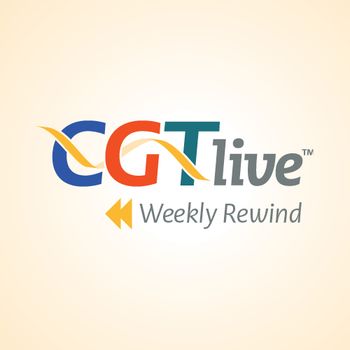
Cilta-Cel's Efficacy in Second-Line Relapsed/Refractory Multiple Myeloma
Surbhi Sidana, MD, the assistant professor of medicine, bone marrow transplantation, and cellular therapy at Stanford discussed the benefit of second-line cilta-cel in PFS and OS.
The phase 3 CARTITUDE-4 clinical trial (NCT04181827) evaluated ciltacabtagene autoleucel (cilta-cel; Carvykti), a chimeric antigen receptor T-cell (CAR-T) therapy, for the treatment of relapsed/refractory (r/r) multiple myeloma (MM) against standard-of-care (SOC) pomalidomide (Pomalyst) plus bortezomib (Velcade), and dexamethasone (PVd) or daratumumab (Darzalex) plus pomalidomide and dexamethasone (DPd). Surbhi Sidana, MD, an associate professor of medicine and associate director for Clinical Research in the Bone Marrow Transplantation and Cell Therapy Division at Stanford University, spoke to CGTLive®'s sister site OncLive® about the efficacy results.
Sidana specifically discussed findings from survival subgroup analyses indicating that patients with high-risk cytogenetics had improved progression-free survival (PFS) and overall survival (OS) with cilta-cel compared to standard of care treatment. In addition, she also touched on analysis of patients with extramedullary disease and analysis of cilta-cel after 1, 2, and 3 prior lines of therapy.
OncLive: Can you discuss the efficacy of cilta-cel in second-line r/r MM?
Surbhi Sidana, MD: To set the stage, what we have seen in the couple of years in the past is that there is a PFS benefit that led to the FDA approval of cilta-cel in the second line. Then there was an OS benefit that Dr. Mateos presented at the International Myeloma Society meeting in 2024.
What this abstract and poster builds on is the analysis of the OS and PFS in subgroups, particularly patients who have high risk cytogenetics, as you define by translocation 4; 14, 14; 16, 17p, or gain of 1q. [With] cilta-cel, the PFS was better in the patients with high-risk cytogenetics than not; even OS was better.
We then looked at patients who had extramedullary disease—and this is patients with true extramedullary disease that is not contiguous to bone. While this was a small subset, patients with cilta-cel did much better with 12 months PFS versus only 4 months with standard of care. But that 12 months tells us that this is the area that we need to improve upon and need to add different strategies.
We also, as a third thing, looked at different lines of therapy because many people say, "Well, that's great that we have cilta-cel, but do you have to use it in second-line? It's approved, but do you have to use it?" So we looked at 1 prior line of therapy, 2 prior lines of therapy, and 3 prior lines of therapy, and the benefit was sustained in all of these subgroups, suggesting that this is a superior therapy in terms of efficacy for PFS and also trend for OS in each of these subgroups.
This transcript has been edited for clarity.
Newsletter
Stay at the forefront of cutting-edge science with CGT—your direct line to expert insights, breakthrough data, and real-time coverage of the latest advancements in cell and gene therapy.











































